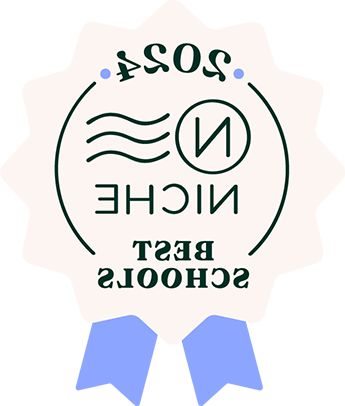Featured Story
Teaching to the Future: St. Luke's Fascinating Dive into AI
“A person in 2030 will need to be a confident and ethical navigator of technologies that haven’t been invented yet.” — Liz Perry, Assistant Head of School for Academics
Developing best teaching practices around technologies as they emerge is no simple task. St. Luke’s has been ahead of the curve in understanding the immediate impact of Artificial Intelligence on education. We responded by quickly developing a Prevention and Exploration strategy. Clarity around pitfalls and opportunities enabled us to develop a comprehensive emerging technologies core curriculum and unleashed our creative faculty. Below are just a few examples of how teachers and students are diving into the possibilities:
Chatting with Molière
In Jon Shee's French IV and Honors French IV classes, students learned about the French playwright Molière prior to reading and doing a deep-dive into one of his most well-known comedies, "Le Bourgeois Gentilhomme." After studying bits of Molière's biography, they then used ChatGPT as a group activity in class to do a mock interview of the long-deceased Molière by directly asking "him" questions to better understand Molière's life from the playwright’s perspective.
Picture Perfect Math
In Cali Touloumes’ Algebra II with Trigonometry class, students used the AI tool PhotoMath in their work on binomial expansions. Touloumes wrote different problems on the whiteboard, and students worked in small groups to solve them. When the students finished, they checked their work using PhotoMath, a phone app that allows you to scan the problem and get step-by-step directions to ensure you understand the solution.
When asked about the pros of using PhotoMath, one student said, “It was quick, easy, and correct.” Ms. Touloumes also engaged students in reflection on the ethical use of tools like PhotoMath, asking them to consider when they need to disclose its use to their teachers.
Newton’s Laws in Action
In Mark Chuhta and Susan Bralower’s science classes, eighth graders used AI in their Newton’s Law Poster Project. Students were tasked with applying Newton’s laws of motion to a subject they chose (e.g., basketball or dog walking) and then teaching the laws to fifth graders. They had to create a poster for each law, stating the law, selecting an image of the law in action, and explaining how the law connects to the image they chose.
In Mark Chuhta and Susan Bralower’s science classes, eighth graders used AI in their Newton’s Law Poster Project. Students were tasked with applying Newton’s laws of motion to a subject they chose (e.g., basketball or dog walking) and then teaching the laws to fifth graders. They had to create a poster for each law, stating the law, selecting an image of the law in action, and explaining how the law connects to the image they chose.
First, students used ChatGPT to interview Sir Isaac Newton. Rather than just reading about him in a book, the AI interview helped to engage students in a fun way that let them feel as if they were talking to someone from the 1600s. Next, students could use Canva or ChatGPT to create the image they wanted to include. Using different prompts, they explored the iterative process to get to the image that best fit the needs of their posters. Lastly, they used ChatGPT to create audio scripts on a fifth-grade level to best explain their project to their audience.
We look forward to bringing you more examples of how we leverage technology for learning that lasts. To help navigate teaching and learning on the edge of innovation, St. Luke’s developed guidelines for AI use. New language is featured in the student and employee handbooks, and we have incorporated AI into the honor code pledge.
More About St. Luke’s & Emerging Tech
St. Luke's State of the School: Emerging Technologies presented by Assistant Head of School for Academics Liz Perry
St. Luke’s School is a secular (non-religious), private school in New Canaan, CT for grades 5 through 12 serving over 35 towns in Connecticut and New York. Our exceptional academics and diverse co-educational community foster students’ intellectual and ethical development and prepare them for top colleges. St. Luke’s Leading with Humanity curriculum builds the commitment to serve and the confidence to lead.











